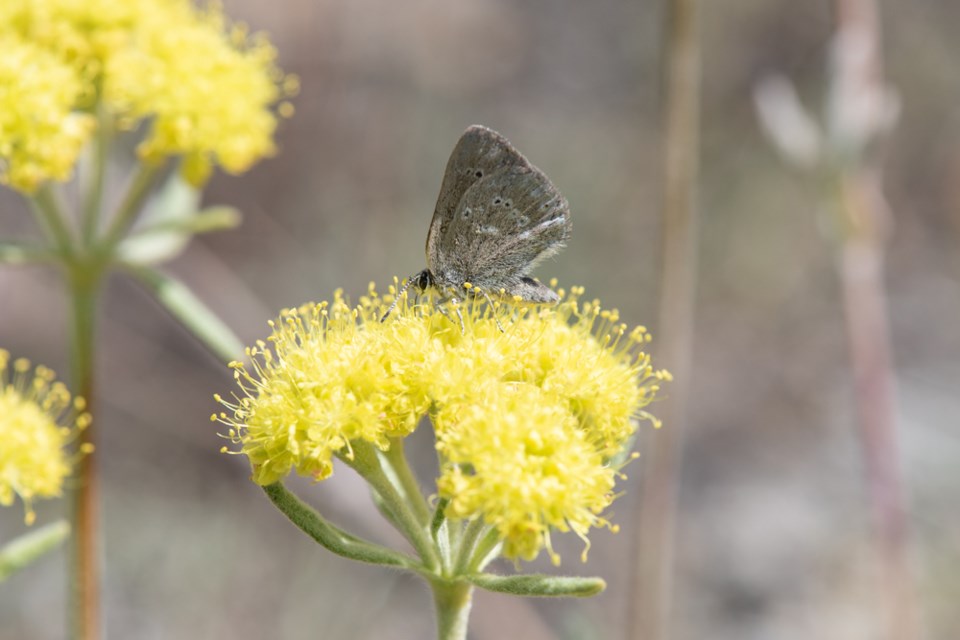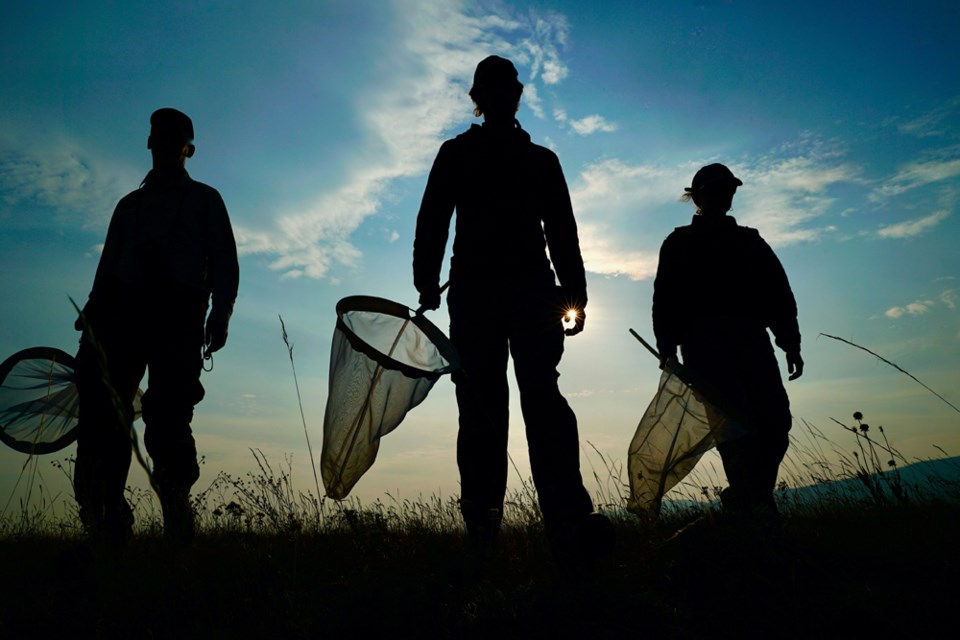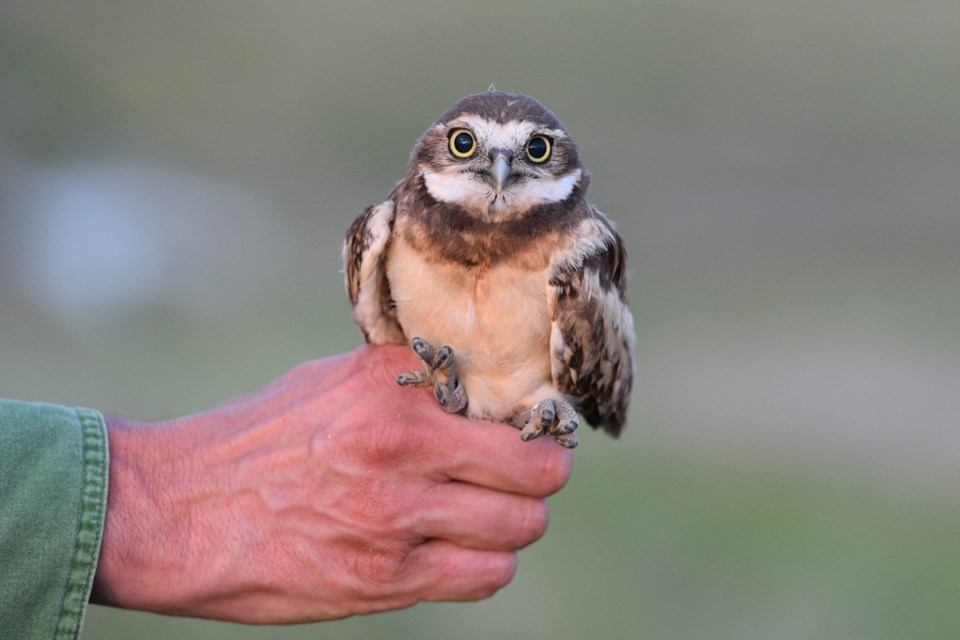Unlike humans, animals have no concept of provincial or state borders.
There’s a profound commitment from conservationists around the world, including those at the Wilder Institute, to tend to the needs of at-risk species within and across borders.
Case in point: the burrowing owl and half-moon hairstreak butterfly. Both species have populations in prairie habitat within Canada and both are at risk.
Field work that’s being conducted every summer aims to help their numbers rebound by learning more about these species and what can be done to improve their survival rates.
The only owl known to live in burrows rather than trees or crevices, the burrowing owl exhibits numbers that have dropped precipitously over the last 40 years. Burrowing owls are endangered in Canada, and a federal government estimate from 2015 suggests as few as 270 breeding owls are left in the country.
Land-use changes and a shifting climate are thought to be two major contributing factors, but far more work needs to be done to understand those threats and develop solutions.
The goal is to restore those numbers to north of 3,000 pairs over the next three decades and incrementally increase those figures in the intervening years.
“We used to have thousands of these individuals across the prairies in Canada and we’re down to hundreds now, and we know we need to take action,” says Natasha Lloyd, the Wilder Institute’s senior manager of conservation translocations.
The Wilder Institute is spearheading a concept called “head-starting” to help those populations rebound in collaboration with federal and provincial governments, and local landowners. The practice involves smaller chicks being brought into human care over winter months, when survival is particularly low. They are protected from the threats they would face in the wild and are released the following spring when they have a chance to contribute to the Canadian population.
“Our hope is that this technique of head-starting, along with other conservation measures, could help shift the needle so the decline is halted and the populations become more stable,” Lloyd says. “And then, ultimately, we need to move the needle towards a trend where their numbers are increasing again.”

The only population of the half-moon hairstreak butterfly in Alberta is found on the Blakiston Fan in Waterton Lakes National Park.
Invasive species and natural disturbances such as fire and flooding are threats that impact the ability of this endangered insect to recover.
But there is hope.
Alongside Parks Canada, the Wilder Institute is conducting vital field research, along with genomic and genetic testing, to better understand the butterflies’ needs and future.
Understanding the genetic relatedness between populations in Alberta, B.C. and in the U.S. will allow decisions as to whether conservation breeding and translocations may be needed in the future to help ensure recovery of this species.
Since 2019, those efforts have yielded dramatic results: what was less than 100 butterflies observed in 2019, has risen to approximately 700 observed in 2021. This species is an important part of the ecosystem. It has a very close relationship to ants where the larvae produce a sugary substance that the ants eat and the ants help protect the larvae from predators.

“It looks like they are bouncing back from previous declines but that doesn’t mean they’re out of the woods at all,” Lloyd says. “Insect populations fluctuate up and down quite regularly. So given the threats and the already small population, they’re at risk of something happening again that could wipe them all out. But working with the tools that we have, like conservation translocations, we can do something rather than just watching species populations potentially drift off into extinction.”
The efforts to save the burrowing owl and half-moon hairstreak are among many projects the Wilder Institute is currently working on. Wilder’s work in wildlife conservation is based in collaborative partnerships with governments, industries, and other conservation organizations. As a wildlife conservation charity, the Wilder Institute’s work is made possible through the generous support of donors and sponsors.
To support the Wilder Institute’s innovative conservation programs, visit wilderinstitute.org/take-action.



